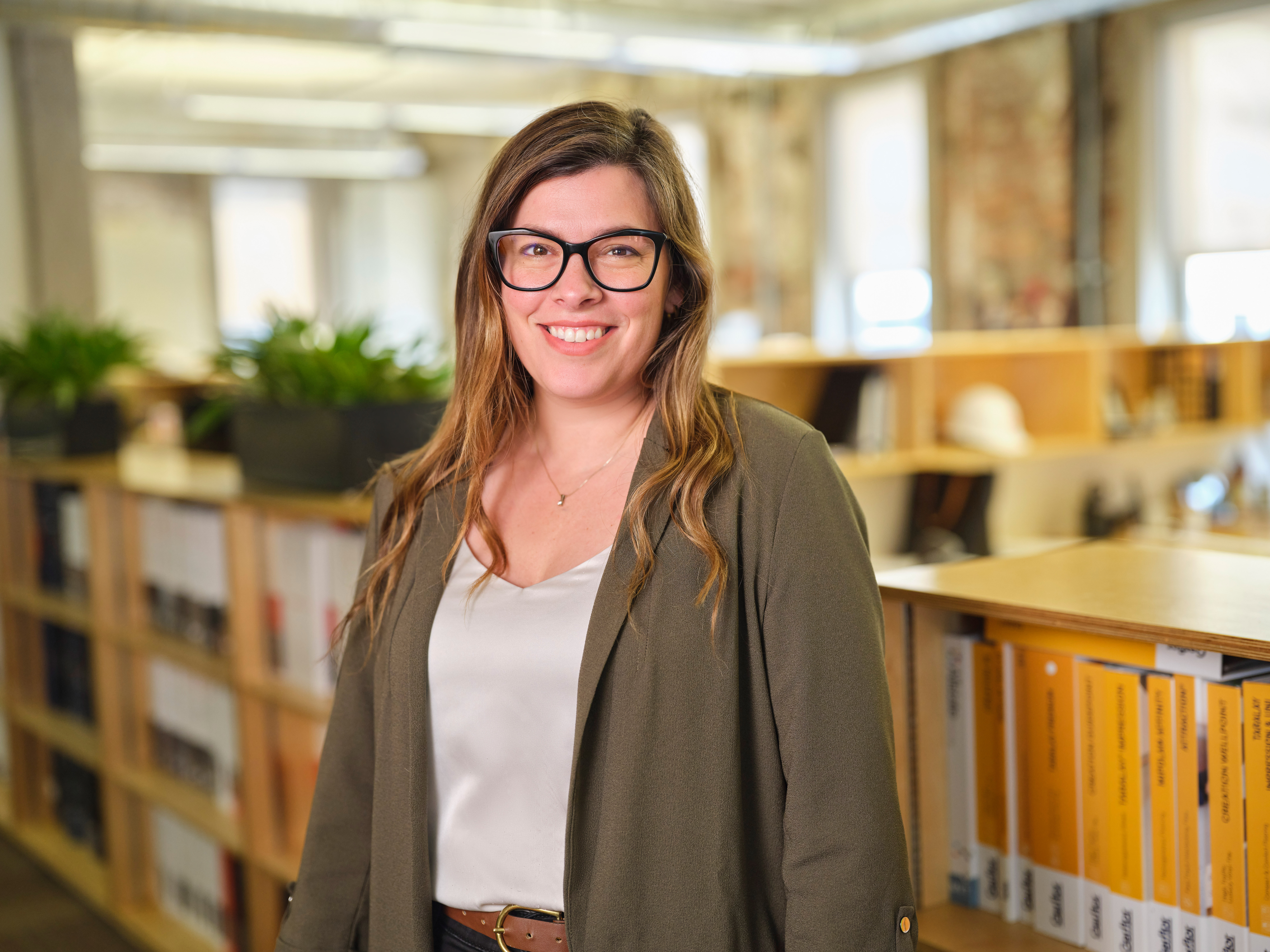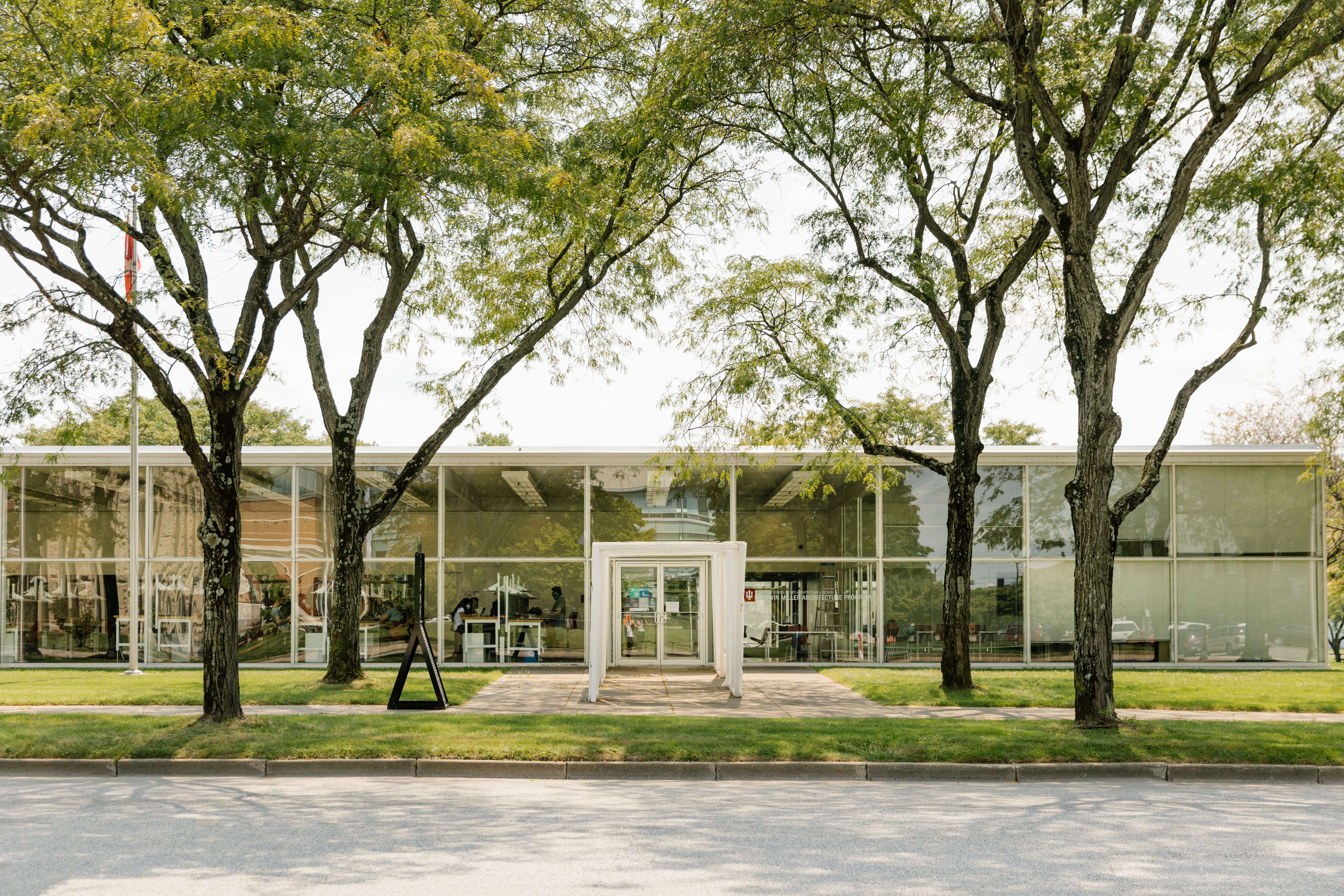Growing up near Columbus, Indiana, Jes Miller did not see the city as a “special architectural place.” That only dawned on her after she moved away for college and worked out of state and abroad. She remembers going to the Commons Mall and Playground, designed by Cesar Pelli, as a child. The Playground always felt like the International Space Station, while the mall was dotted with sophisticated vendor stops and exuded a park-like atmosphere indoors. “Of course, I took all of this for granted, as well as the other architectural wonders around town,” Miller says.
T. Kelly Wilson, Associate Professor at the J. Irwin Miller Architecture Programme at Indiana University’s Eskenazi School of Art, Architecture + Design, changed her mind. During Miller’s first visit to the programme, Wilson gave her a tour of a place she thought she knew well. “But through his eyes, it was a completely different experience. It felt like exploring a beautiful painting created by many masters, where each brushstroke connected to the others despite being separated by hand and time,” she says. “I knew I wanted to experience the world the way Kelly does and be able to articulate the unique role architecture plays in making a place special, much like Columbus.”
Columbus, Indiana, where you’ll find more than 80 significant structures and seven landmarks of modernist architecture listed on the National Historic Landmarks Register, is the home of the Miller Architecture Programme.
In this living laboratory, students pursuing the Master of Architecture (M. Arch) degree contextualise their study of architecture, art, and design within the city’s remarkable built environment and unique public-private coalition-building process. There are many opportunities for faculty, students, and the community to collaborate.
“Columbus’s rich architectural legacy played a significant role in shaping my educational experience as an international student,” says graduate Simbarashe Mupandi from Zimbabwe. “The city’s unique history and collection of award-winning buildings, such as the Miller House, Cleo Rogers Memorial Library, First Christian Church, and North Christian Church, provided me with invaluable opportunities to engage with architecture firsthand.”
Such is the impact of the Miller Architecture Programme in preparing students and serving communities that it recently earned accreditation from the National Architectural Accrediting Board. NAAB is the only accrediting body for professional architectural degree programmes in the US. With this accreditation, graduates can now satisfy the education component for registration as an architect anywhere in the US.

M. Arch graduate Jes Miller is now involved in some exciting master planning initiatives that will make a positive impact on their respective communities. Source: Indiana University
What the accreditation represents has long been well-known to Miller M. Arch graduates: their programme makes great architects. The cross-pollination of the practices of studio art and architecture prepares students to see like an artist and think like a community member. Graduates emerge with the competencies to respond to the changing demands of the industry, incorporate coalition building and community engagement into design practice, and understand the dynamic relationships between architecture and art, the city, and the world.
With guidance from his professor and through engagement with the community of Salem, Indiana, Mupandi designed and installed a mural in that small city – an exercise that opened his eyes to how “architecture and design can address deeper societal issues, such as culture and identity.” “The story behind the mural made me realise how architecture can be a tool for expressing and preserving cultural narratives, something I hadn’t considered before,” he says.
Students in the Miller M. Arch programme take the approach that your studio is anywhere in the world, with students heading to Rome at the end of their first year. As part of the Nomadic Studio, students observe and analyse architecture, stradas, piazzas, and art in the Eternal City. They draw urban landscapes, plans, and sections with proportional measurement in sketchbooks. In their third year, students get to choose to go to any architecturally significant major city around the world to further deepen their art of visual structure and composition, and practice of embedding the ideas, concepts, and perceptions that fuel a designer’s imagination.

The Miller M. Arch programme deepened Simbarashe Mupandi’s understanding of how architecture must respect its context, history, and surroundings while still providing sustainable and resilient shelter for its inhabitants. Source: Simbarashe Mupandi / Indiana University
An education in risk taking, entrepreneurship, and critical thinking
The Miller Architecture Programme is part of the Eskenazi School of Art, Architecture + Design, in the College of Arts and Sciences at Indiana University Bloomington. Within the school’s 175,000 square feet of studio, classroom, and office space, facilities, centres, and collections across six buildings and two campuses, students may explore Studio Art (a wide range, from painting and photography to printmaking and ceramics), Fashion Design, Interior Design, Comprehensive Design, Merchandising, and Architecture. There’s even a new ArtShop offering course-specific supplies and selling student work, three galleries, including one that is student-run (Grunwald, Miller, Tangent), and three fabrication/wood shops with advanced technology and tools.
Pair all of this with well-designed programmes and well-known faculty members, and it’s easy to see how the school has produced many successful graduates. Within six months of graduation, 93.3% of undergraduate students secured a successful career outcome, with 85.5% reporting. Among graduate students, many Miller M. Arch students receive fellowships and support for education abroad while all MFA students are supported for three years with tuition reimbursement, living stipend, and course fees while gaining professional training as instructors.
Today, Miller is working at renowned architectural and interior firm, arcDESIGN, in downtown Indianapolis. A degreed project architect at JAQ Corp in Chicago, Mupandi credits the Miller Architecture programme with having “[given] me practical insights into how to bring creative visions to life. This emphasis on feasibility while maintaining artistic integrity has prepared me to approach architecture as not just functional design but as an art form.”
For a globally oriented, nationally accredited architectural education, learn more about the J. Irwin Miller Architecture Programme today.










